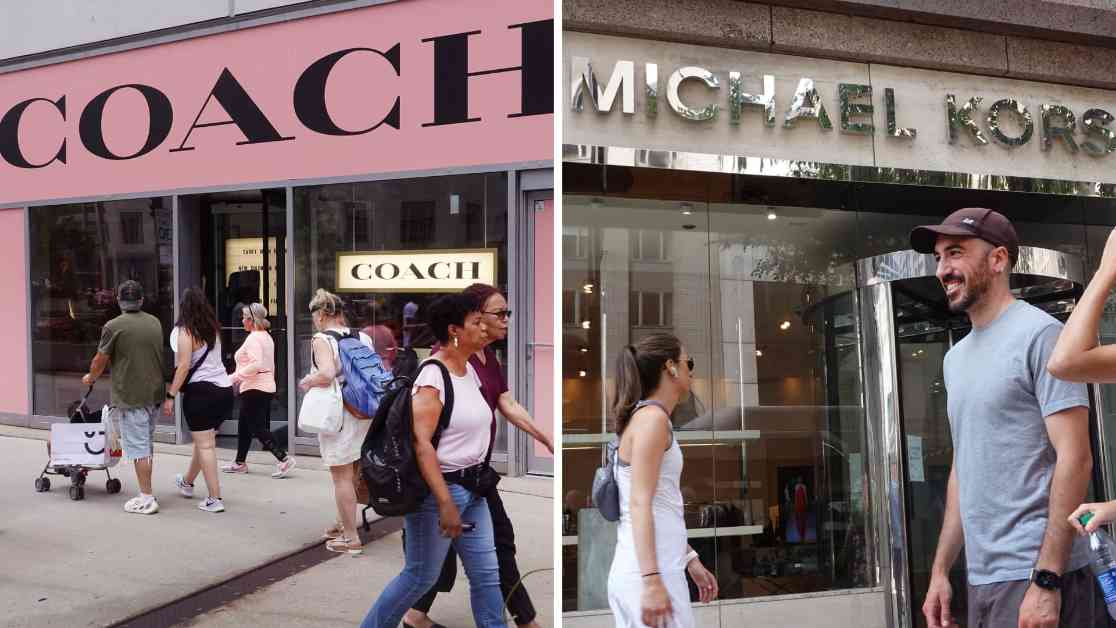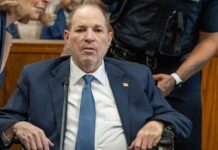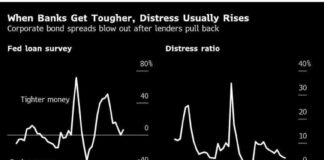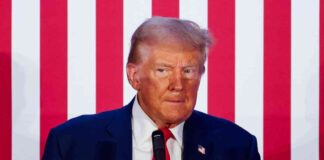Examining the Potential Coach and Michael Kors Merger
Pedestrians walk past a Coach store and a Michael Kors store, two iconic brands in the fashion industry. Just a few miles from the birthplace of Coach in New York City, a federal judge is set to decide whether its owner, Tapestry, can merge with Capri, creating a bag behemoth. This decision will have significant implications for consumers, as it raises questions about pricing, competition, and choices in the retail sector.
The antitrust trial in Manhattan, where investors, lawyers, and reporters have gathered, revolves around a Federal Trade Commission lawsuit seeking to block the merger of Tapestry and Capri. The proposed $8.5 billion deal would bring together six fashion brands under one umbrella: Tapestry’s Coach, Kate Spade, and Stuart Weitzman, with Capri’s Versace, Jimmy Choo, and Michael Kors. While Tapestry and Capri announced the merger over a year ago, the FTC intervened in April, arguing that the consolidation would reduce competition, limit affordable handbag options for consumers, and lead to poorer pay and benefits for employees.
The central argument put forth by the FTC is that merging Coach and Michael Kors, two brands with similar price points and target markets, would diminish competition. Both brands have a strong presence in retail outlets across various income demographics, from department stores like Macy’s and Dillard’s to off-price retailers like T.J. Maxx and outlet stores. The concern is that consolidating these brands under one company would restrict consumer choice and potentially drive prices higher.
On the other hand, Tapestry and Capri defend the merger as a strategic move to stay competitive in a rapidly evolving industry. With changing consumer preferences and the rise of new brands, they argue that combining forces will enable them to reach a broader audience across different age groups and income levels, particularly in the luxury and high-end markets. The outcome of this antitrust case will not only impact the companies involved but also shape the landscape of the fashion industry, influencing how consumers shop for bags, eyeglasses, and apparel.
Key Questions Arising from the Trial
As the trial unfolds, several key questions have emerged, shedding light on the dynamics of the handbag industry and the potential implications of the merger:
1. How Fierce is Competition in the Handbag Industry?
In a market driven by trends and consumer preferences, Tapestry and Capri argue that competition is intense, even for established players like Coach and Michael Kors. The debate in court revolves around who their true competitors are and whether they primarily compete with each other or face a broader array of brands. The concept of “accessible luxury” has been central to this discussion, with the FTC defining it as a category that encompasses higher-end fashion at a reasonable value.
Executives from both sides have presented evidence to support their claims, highlighting the evolving landscape of the industry. While the FTC contends that the merger would consolidate market power and limit options for consumers, Tapestry and Capri maintain that competition has intensified, necessitating strategic alliances to keep pace with changing trends and consumer behaviors.
Testimonies from industry experts, including Chanel’s head of merchandising for accessories and leather goods, offer insights into how luxury brands perceive competition and position themselves in the market. The trial has showcased industry data, consumer surveys, and internal documents to paint a comprehensive picture of the competitive landscape and the potential impact of the merger on consumer choice and pricing.
2. Would the Deal Hurt Consumers?
The crux of the FTC’s argument lies in the potential harm to consumers if the merger proceeds. Economist Loren Smith, a key witness for the FTC, has presented compelling evidence suggesting that the combined entity would wield significant market power, leading to price increases and a decline in product quality. His analysis indicates that consumers could face an average price hike of 15% to 17% for the merged company’s goods, translating to an annual consumer harm of $365 million.
The FTC’s case rests on the premise that the merger would stifle competition, allowing the new entity to raise prices with little incentive to invest in innovation or quality improvements. While Tapestry and Capri have challenged Smith’s methodology and definitions of competition, the overarching concern remains about the potential negative impact on consumers’ wallets and choices in the handbag market.
The trial has delved into the intricacies of market dynamics, pricing strategies, and consumer behavior, highlighting the delicate balance between fostering competition and ensuring fair pricing for consumers. As the debate unfolds, the implications of the merger on consumer welfare remain a focal point for both sides.
3. Why Did Tapestry Pursue the Merger with Capri?
Tapestry CEO Joanne Crevoiserat’s testimony offers valuable insights into the rationale behind the merger and the strategic objectives driving the proposed deal. By showcasing a diverse portfolio of brands, including Coach, Kate Spade, and Stuart Weitzman, Tapestry aims to cater to a wide range of customer preferences and occasions. The merger with Capri, which owns iconic brands like Michael Kors and Versace, presents an opportunity to expand market reach and inject fresh energy into underperforming brands.
Internal documents unveiled during the trial shed light on Tapestry’s meticulous process of evaluating acquisition targets and weighing the potential synergies with Capri. The strategic alignment between the two companies, despite their distinct brand identities, underscores the shared goal of enhancing customer engagement and brand relevance in a competitive market.
Crevoiserat’s testimony emphasizes the importance of maintaining brand autonomy and creative freedom within Tapestry’s framework, ensuring that each brand retains its unique identity and market positioning. While the high price tag of the acquisition raises eyebrows, the long-term vision of driving growth and innovation across all brands justifies the strategic investment in Capri.
As the trial progresses, the focus remains on how the merger could reshape the competitive landscape, impact consumer choices, and influence pricing dynamics in the handbag industry. The outcome of this antitrust case will not only determine the fate of the Tapestry-Capri merger but also set a precedent for future mergers in the fashion and retail sectors.
In conclusion, the antitrust trial involving Tapestry, Capri, Coach, and Michael Kors raises critical questions about competition, consumer welfare, and strategic decision-making in the fashion industry. As stakeholders await the judge’s ruling, the implications of this merger extend far beyond the courtroom, shaping the future of retail and consumer choices in the ever-evolving world of fashion.






















